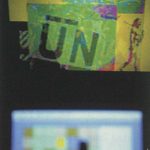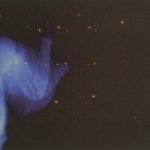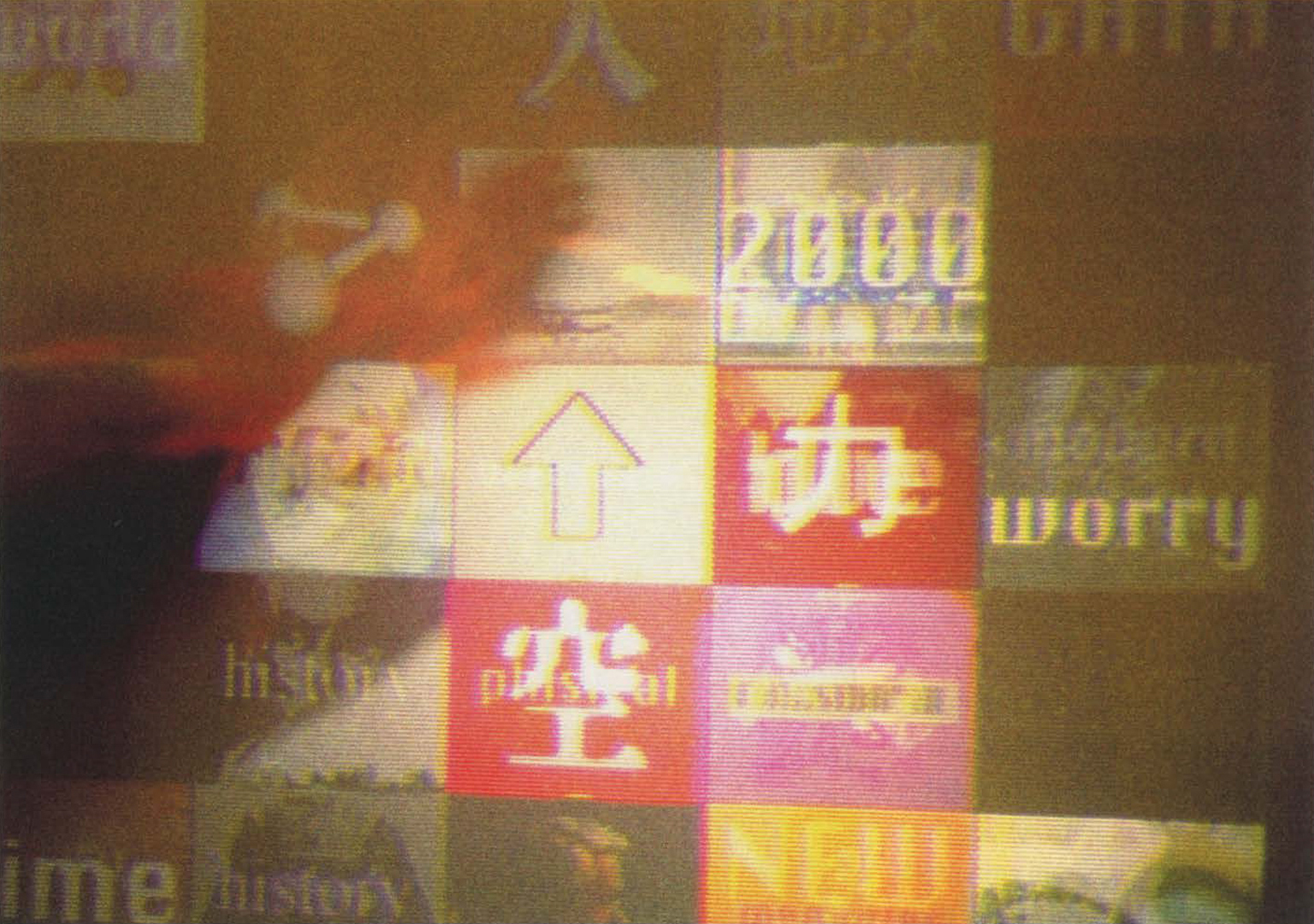Haruo Ishii: Wall
Artist(s):
Title:
- Wall
Exhibition:
Creation Year:
- 1996
Category:
Artist Statement:
Wall is a work that generates various sounds and images in real time based on the movement of a visitor’s hands in space. An invisible cubic grid with 100 invisible cells extends out in front of the visitors as far as they can reach. The grid has four layers. Each layer consists of five horizontal rows and five vertical columns. Visitors can freely manipulate the work by touching this invisible grid (entirely without tactile sensation). Different sounds and images are allocated to the four layers of the grid. The images are generated on a screen. Audio sounds are emitted from speakers placed near the screen. When a hand probes into the invisible grid, a sound and an image are activated each time it passes through a cell. First, the hand touches a layer that generates sound effects and moving pictures. Next, the hand reaches a layer that brings forth words. The hand’s movement is captured with two video cameras set in front of and next to the grid. The sign a ls are converted into images and sounds through the computer and digital sound sampler.
I try to avoid difficult operations, as well as mechanical interfaces such as joy-sticks or touch panels. I want participants to be able to interact freely in a three-dimensional space. It is important to me that my interactive work incorporates an environment in which users can easily participate with little information. Participants can continuously concentrate on an act if the interface they use is uninterrupted by intervals, and since the interface area and the viewing position are the same (the outstretched arm points directly to the screen), participants can concentrate entirely on the screen. Of course, since the interface is invisible, it is difficult to conjure sounds and images as accurately as one would like. I hope that participants will enjoy the coincidental combination of sounds and images.
It is critical that the work instantly generates sounds and images that reflect the behavior and reactions of the human participant. I aim for this sense of oneness between human behavior and the response to sounds and images. In the East, space is not empty. It is filled with feeling or energy called Ch’i. Some believe that there are various entities within invisible space, such as feelings, thoughts, energies, and intentions. To cite a familiar example, you may have seen how in Chinese Kung-fu movies, the Kung-fu master directs all his energies to throw back his opponent without touching him at all.
In short, human behavior can easily affect the outer world immediately beyond space. Wall can provide such an experience virtually. I sought to provide an environment in which a participant’s body has a free and direct relationship with the work without touching any equipment. I want the visitor to feel in control of the images and sounds as though there are tiny strings attached to his or her fingertips, to stir within a mysterious sense of oneness between the participant and the surrounding space.
All Works by the Artist(s) in This Archive:
- Haruo Ishii
-

Wall
[SIGGRAPH 1996] -

Hyper Scratch
[SIGGRAPH 1993] -

Omnipresence Ver.1
[SIGGRAPH 2001] -

Hyperscratch 9.0
[SIGGRAPH 1999]





